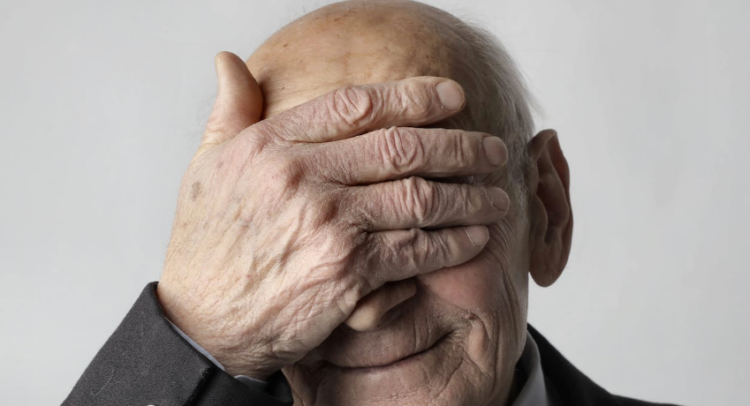Raboyseyee and Ladies,
Several mazel tov shouts among close friends; here we go.
Wednesday morning the heylige Ois and eishes chayil were in attendance at the bris of baby Meir Feit, he the new arrival to Suzzanne and Adam Feit, she the daughter of our good friends Debby and Mark Fenster. What a joyous occasion with the baby’s great grandfather in attendance. Mazel tov to the Fensters, the Feits and both extended families. May baby Meir be a source of much bachas -always- to his entire extended family.
And while the Ois was away in Italy last week, Emily and Isaac Rosen (he the son of our friends Malky and Phil Rosen, she the daughter of Debra and Morey Klein) had their first child, a baby girl. A big mazel tov to our friends Malky and Phil Rosen and to Debra and Morey -their first grandchild- and may Bailey Toni be a source of much joy and nachas to the entire extended family. Mazel tov as well to grandma Miriam Klein. And the last mazel tov to great grandmother -and a friend of the Ois for 42 years- Sara Leifer; they don’t come much nicer. The Rosen’s are hosting kiddish (pop in and tell them the Ois invited you) this coming shabbis without the Ois in attendance as he and the eishes chayil are on the way to Los Angeles -right now- to attend an aufruf and wedding.
Speaking of the upcoming wedding, mazel tov to friends of many decades Naomi and Howie Berg, they of West Orange New Jersey (the Ois was their shadchan) upon the upcoming marriage of their son Ari -Dr. Ari- whose aufruf and wedding we will be attending this coming Shabbis and Sunday over in Los Angeles. We have known Ari since birth, attended his bris, and here we are. Ari will be marrying Olivia Levkowitz, she the beautiful and accomplished daughter of Elayne and Howard Levkowitz. May Olivia and Ari be blessed to enjoy many decades of blissful marriage together. Mazel tov to Ari’s sisters, their husbands and the extended families on both sides.

And mazel tov to our block neighbors and friends Sandy and Ed Klar upon the arrival of a granddaughter born to their children Emily and Jake Klar, first time parents. Givaldig! Welcome to the world Aliza Sora Klar and may you bring much joy to your parents, grandparents and your entire extended family.
We are done for this week; keep the good news coming.
Anti-Aging in the Heylige Toirah
Long before Botox was introduced in 1989 -which by itself is a $17.4 billion-dollar business- and long before other anti-aging creams, and new machine-based technologies which include various methods to make people look younger, skinner and less wrinkly, and when combined, add up to a multi-billion-dollar business opportunity for its many practitioners, a more natural anti-aging was introduced. The details -believe it or not- are found in our parsha; where else? Mamish? Yes; and the emes is that Parshas Vayero should be split up and read over a few shabbosim. It’s loaded with many -efsher too many- storylines for one parsha and zicher for one review. Vayero, is mamish nothing short of amazing and includes yet another attempt by Avrohom to rid himself of his wife, his failed negotiations to save the city of Sedoim, the complete destruction of Sodom and Gomorrah, the great and emotional story of why the RBSO decided to overrule his malochim (angles) and save Yishmoel (future enemy of the Yiddin), plus the incredible story of how Loit and some of his family were selected -as was Noiach and his-generations and a few parshas back. Of-course, you won’t want to miss the more than amazing story of Loit and his virgin daughters, and the heartwarming story of Yitzchok’s birth and his near-death experience on the Akeydo. It’s Hollywood or at least Netflix ready and nothing less. Between the heylige Toirah, Rashi, the Gemora and myriad medroshim, we will also come across discussions that include homosexuality and incest. Well, blow me down and let us begin.
Who was the first to introduce the concept of anti-aging? Who was the first beneficiary? And why is the Ois going to introduce this topic with kimat at least one page full of fun but otherwise useless factoids? And what has all this to do with our parsha of the week which is most famous for the birth of Yitzchok when Avrohom was 100 and Soro 90, for the destruction of Sedoim (Sodom for the goyim), for sexually charged and textually based story of incest between Loit and his two daughters -say it’s not but the heylige Toirah says mamish otherwise, and for the abduction of Soro by King Avimelech after Avrohom announced -without Soro’s permission- that Soro was but his sister? We shall soon find out. As an aside, if you find some of the text sexually charged, wait until you read Rashi, the Medrish and many others who further illuminate while letting their imaginations run wild. Why the medrish wanted us to have such color, ver veyst? On the other hand, without them, the Ois could mamish shut down his entire site.
Let us then begin with a brief overview of the entire anti-aging industry, a history of treatments and approaches over the centuries. And let’s get real: Wanting to look younger is not a new concept. Over the centuries, people have wanted to live longer and maintain a more youthful appearance. According to informed sources (all researched on the heylige Internet), a few of the anti-aging treatments still in use today can be traced back as far as the Egyptians. Famed for taking two baths a day in donkey milk, Cleopatra, the queen of Egypt, is probably the first person we think of when ancient beauty regimes are explored. Thankfully she wasn’t lactose intolerant. They say that milk contains alpha-hydroxy acids which play a role – so they believe- in anti-aging. It is also good for softening the skin as it is full of vitamins and minerals. Others suggest that Cleopatra used to tone her face with apple cider vinegar and used honey as a moisturizer. What did she use? Ver veyst? Veyter. Galen, a Greek, and leading physicians in the Roman Empire is credited with creating the first-ever cold cream. Cold creams are designed to remove makeup and clean the skin while leaving it soft to touch. His recipe combined beeswax, olive oil and water. Modern cold creams are more advanced but are still essentially a combination of oil and water. The first female ruler in China’s history, Wu Zetian was known for her skincare regimen. She used a powder made from motherwort, an herb that is used widely in Chinese medicine today, mixed with cold water. Mary, best known as being the adversary of Elizabeth I, was known for her desire to retain a youthful appearance and paid a lot of attention to her beauty regime. In particular, she used to take wine baths. Commonly called vinotherapy, this is a practice that is making a comeback in some places. Next time your rabbi gets upset about you leaving the shul to join the kiddish club, tell him you’re but going out for some therapy. In the late 19th century, Margaret Kroesen noticed that her daughter, a concert pianist, was developing unsightly frown lines. She developed a system of clear tape that could be worn at night to help reduce wrinkles. Frownies are still available today and are used to help slow down the signs of ageing.

And in 1927, the first cosmetic hormone cream claimed to reverse the signs of aging and reputedly contained glandular secretions from a tortoise. While not a success at the time, it began a revolution in cosmetics. Retin-A was initially developed in the late 60s to treat acne but later in the 80s it became associated with reducing wrinkles and the appearance of ageing. The compound works by improving blood flow and making wrinkles less obvious. Finally, in 1989, along came Botox and shoin! Injecting a toxin into the skin might not seem the best idea for reducing wrinkles, but it has been proven to work again and again. In hyntige tzetyin (todays times), a good majority of the women the Ois knows -and who can afford the treatment- are on Botox. Originally used to reduce muscle spasms, Botox works by blocking signals to the muscles which relax them and gives the face a smoother appearance. And now you know. The bottom line: the anti-aging market size was valued at around USD 60 billion in 2021 and is projected to reach USD 120 billion by 2030. Explosive mamish!

Shoin, let us go back to the question posed earlier: what has anti-aging to do with our parsha? And to answer that question we begin here: As last week’s parsha was closing out, the RBSO promised Avrohom that he would have a son and would name him Yitzchok. As a prerequisite, Avrohom was instructed to perform a bris on his member and shoin. Avrohom was 99 and Soro 89. As our parsha opens, we are post bris and the RBSO sends three visitors (angels dressed as humans) to visit with a recuperating Avrohom. Avrohom’s membership into the -later to become Jewish Nation- has been approved and extended for life; his own member somewhat shortened, if you chap. Among other topics he and his guest discuss over some meat and milk -mistama there were there at least three hours- they tell him that one year from their visit, a son will be bon and that Avrohom will name him Yitzchok. For specifically what went down during the conversation, let us read a few pisukim innaveynig. Says the heylige Toirah (Bereishis 18: 10-12):

| 10. And he said, “I will surely return to you at this time next year, and behold, your wife Sarah will have a son.” And Sarah heard from the entrance of the tent, and it was behind him. | יוַיֹּ֗אמֶר שׁ֣וֹב אָשׁ֤וּב אֵלֶ֨יךָ֙ כָּעֵ֣ת חַיָּ֔ה וְהִנֵּה־בֵ֖ן לְשָׂרָ֣ה אִשְׁתֶּ֑ךָ וְשָׂרָ֥ה שֹׁמַ֛עַת פֶּ֥תַח הָאֹ֖הֶל וְה֥וּא אַֽחֲרָֽיו: | |
| 11. Now Abraham and Sarah were old, coming on in years; Sarah had ceased to have the way of the women. | יאוְאַבְרָהָ֤ם וְשָׂרָה֙ זְקֵנִ֔ים בָּאִ֖ים בַּיָּמִ֑ים חָדַל֙ לִֽהְי֣וֹת לְשָׂרָ֔ה אֹ֖רַח כַּנָּשִֽׁים: | |
| 12. And Sarah laughed within herself, saying, “After I have become worn out, will I have smooth flesh? And also, my master is old.” | יבוַתִּצְחַ֥ק שָׂרָ֖ה בְּקִרְבָּ֣הּ לֵאמֹ֑ר אַֽחֲרֵ֤י בְלֹתִי֙ הָֽיְתָה־לִּ֣י עֶדְנָ֔ה וַֽאדֹנִ֖י זָקֵֽן: |
Bottom line: they were taka older. Soro was post-menopausal and wondered to herself how it’s at all possible for her- in her older and shriveled state- to become pregnant and give birth. Says Rashi quoting from the medrish (Tanchuma) azoy: Soro looked within herself, at her insides and said azoy: “Is it possible that these insides will carry a child; that these breasts, which have dried up, will give forth milk?” And says another medrish (Bereishis Rabba 48:17) that Soro, still talking to herself, pointed out that the time for her menstrual periods was long gone. “After I lost my regular period, will I get back into the flow, and my husband is old?” What she meant, according to informed sources, Rashi included, is this: Soro was wondering if her biological clock would somehow be turned back just like Benjamin Buttons. Could the odometer start spinning backwards as do those in your leased cars before you return them to the leasing agent, minuvils that you are! She was wondering how she could again begin to menstruate. Moreover, she was bewildered how all this could unfold given that her husband was old. Shoin, blame the man, why not.
Ober Lisen to this: but two chapters later (20), in the same parsha, we read how the couple moved to Geror, and that the king had Soro taken to the king’s palace. And with taken, Rashi and the medrish tell us that King Avimelech took her -or had intentions-of taking her as his wife. We assume she was to be one of many. And the question is azoy: why would the king who mistama chapped anyone he wanted, be attracted to an 89-year-old Soro who -in her own words- tells us that she is old, post-menopausal and more? What else did Soro state? Let’s read the key pisukim again. “Now Avrohom and Soro were old, advanced in years; Soro had stopped having the periods of women. And Soro laughed to herself, saying, “Now that I am withered (בלותי), am I to have enjoyment (עדנה)—and with my husband so old?” The heylige Toirah describes Soro as old: she was past her menses, no more flow. She was postmenopausal. Soro said about herself that she was withered. She further claims that she can’t imagine having “עדנה.” Exactly what that word means ver veyst because different Chumashim have different meanings but at least one renders it as “enjoyment,” perhaps sexual enjoyment or the delight of youth, or maybe just the joy of having a child. Alternatively, it could be related to the other meaning of the root ע-ד-נ, “time,” and be understood as a euphemism for menstruation. Whatever its exact meaning, context suggests that it expresses that עדנה is something young people can have, but not people her age. This description zicher conjures up the image of an elderly woman. The bottom line: Soro is in disbelief at the notion of her 89-year-old body, already shriveled up, as becoming a mother. She’s amazed, startled and perplexed. Got the picture? Veyter.

Ober guess what? This very same post-menopausal withered Soro is seemingly desired and kidnapped by Avimelech, king of Geror for the purposes of marriage? What’s pshat here? Why would the King want an almost 90-year-old in his harem? Wait, there’s more. In last week’s parsha, a then 65-year-old Soro was kidnapped and taken to the king’s palace where the swine Paroy couldn’t wait to get his hands and scepter, if you chap, on her. Only direct intervention from the RBSO prevented her from being defiled. And why would Paroy want, and take a 65-year-old when he -as king of his land and country- could take whomever he wanted? Isn’t it good to be the king? Do you know anyone whose first choice is a 65-year-old woman? What’s pshat here?
Efsher you’re wondering what Avrohom and Soro were doing in a place called Geror and why Soro found herself in danger. Did the RBSO send him there? Not! Here are the facts from the heylige Toirah (pisukim 20-21): Now Avrohom moved on from there into the region of the Negev and lived between Kadesh and Shur. For a while he stayed in Geror, and there Avrohom said of his wife Soro, ‘She is my sister.’ Avrohom resorted to his half-truth/half-lie trick. Then Avimelech king of Geror sent for Soro and took her.” Of course, this account seems like a replay of Bereishis 12:10-20 when Soro was but 65. The bottom line: just as Avrohom schemed to protect himself from the Paroy in Egypt, he does so again one parsha later with Avimelech. He pulled out the old “she’s my sister” trick from his playbook and by falsely assuming that the king was a very bad man -wicked mamish.
Believing Soro is unmarried, Avimelech took her as his wife. But the RBSO mercifully kept the king from the sin of adultery by somehow preventing him from touching her. Let’s not ever forget: He is the RBSO! Veyter. It must have been quite the shock when the RBSO confronted Avimelech in a dream with these words: “You are as good as dead because of the woman you have taken; she is a married woman.” Dead man walking! Naturally, Avimelech questioned Avrohom’s motives. Was this a glorious moment for our zeyda Avrohom? He blames his conduct on the RBSO saying that He made him wander from home to a place that is filled with corrupt people. Shoin. Deflect the blame; love it! Efsher you’re now wondering why the RBSO was angry with Avimelech when it was Avrohom who deceived him; what’s pshat here? Ver veyst, but it’s a good thing when the RBSO loves you and is on your side. The RBSO punishes Avimelech for taking Soro as his wife by preventing the women in his household from bearing children. In his dream, the RBSO commands Avimelech to return Soro to Avrohom. For “if you do not return her, you can be sure that you and all yours will die.” Avimelech knew these were not empty words.
On the other hand, let’s read this incredible defense of Avrohom’s actions: Says Rabbeinu Chananel that this time Avrohom divorced Soro when he came to Geror because he was afraid that the local people might kill him if he were to admit that Soro was his wife. Nonetheless, the RBSO did not allow her to be separated from Avrohom. Neither did He allow the righteous woman Soro to remain with the wicked Avimelech as it is not the RBSO’s way to “allow the scepter of the wicked to rest upon the land allotted to the righteous” (Psalms, 125,3). Placing the royal scepter where it did not belong is exactly what both Paroy and Avimelech had in mind, if you chap. As an aside, generations later, the heylige Gemora will try convincing us that Dovid Hamelech too was innocent because Uria divorced his wife Batsheva before going to the front lines. Nice try; gishmak. On the other hand, says Rabbeinu Chananel that the divorce was considered invalid as it had been prompted only by Avrohom fearing for his life. And for that reason, Soro remained a בעולת בעל, a married woman, in the dream in which the RBSO appeared to Avimelech. He made it plain to Avimelech that the technical status of Soro as a divorced woman was caused only by circumstances over which Avrohom had not had any control at the time.
Ober, efsher we can kler azoy: Even though Avimelech’s intentions were good, as long as Soro was living in his harem he was in danger of sinning. A person who eats a poisonous toadstool, thinking it’s a harmless mushroom, no doubt has perfectly good intentions—but will still suffer. The bottom line: Avimelech not only returns Soro, but also generously showers Avrohom with gifts and grants him permission to live anywhere on his land. Avrohom davens to the RBSO for the health of Avimelech and his countrywoman (now all unbale to conceive). In response to Avrohom’s prayer, the RBSO heals the women’s inability to bear babies. Another bottom line: though the women of Geror were back in business and became fertile instantly, Soro -at least at this point in the narrative- remains childless. The bottom lines of this story: the RBSO kept Avimelech from touching Soro and sinning. At times, it may seem to us that the RBSO is silent, but He works as much in the invisible realm as He does in the obvious. Surely there were times -perhaps many- when He protected us from sin and other danger without us knowing. Shoin, the Ois had a moment there; let’s move on.
As an aside, efsher you’re wondering just how we know that Soro was 65 at the time of abduction by Paroy (last week) when the heylige Toirah never mentioned that factoid, are you? The answer is azo: the heylige Toirah (Bereishis 11:30) already established Soro’s barrenness. Next: her age -65- is established by subtracting 10 from Avrohom’s age, 75, that age told to us in the text. And shoin: she’s was 65 when taken by Paroy. But was she still so attractive at 65 to be taken to the palace for forced relations? Of course, this too was addressed by the medrish which tells us azoy: Soro was an unusually beautiful and young looking 65-year-old woman. After she passes away, Rashi will teach us that she mamish was a beauty even late in life. “And Soro lived one hundred years and twenty years and seven years” – at one hundred she was like a twenty year old insofar as sin and like a seven year old insofar as looks:”.בת מאה שנים כבת עשרים לחטא, ובת עשרים כבת שבע ליופי

Seemingly she was still beautiful at 65 and mistama you recall that just last week the Ois shared a Rashi who told us that Avrohom took note of her beauty and therefore asked her to lie and sates she was his sister. And if it’s shver (difficult) to chap Soro as still very beautiful in the first kidnapping story (Paroy in Mitzrayim), where she would be 65, it is kimat impossible to understand her as young and beautiful in the second kidnapping story by Avimelech in Geror; what’s pshat here? Can a kimat 90-year-old women who described herself as old and withered be found so attractive to the king’s people and then the king himself? Ver veyst? On the other hand, there is one opinion suggesting that Avimelech may have had a different motivation in taking Soro. In light of the subsequent warm relationship between Avrohom and Avimelech (21:22–32), it is quite possible that the king’s goal was an alliance with the patriarch for purposes of prestige and economic advantage. Business is business! On the other hand, this pshat is counter-intuitive, running against the implicit theme of “kidnapping the woman” stories. It only makes any sense based on a later story; reading this story in its own context, there is no reason to imagine that the powerful king Avimelech needs to go out of his way to make an alliance with the petrified sojourner, Avrohom. Finally, whatever the reason he took Soro, it is clear that he is interested in lying with her, since the RBSO explicitly stops him from doing so (see 20:6); that’s monkey business, if you chap. The bottom line: whatever her age, she must have appeared as relatively young and attractive to Avimelech, something that does not jibe well with the description of a withered, 90-year-old woman. How are we to understand Soro’s appearance here in our parsha? Is she young and beautiful as Avrohom describes her last week or old and withered as the RBSO and then Soro herself describes herself? Ver veyst?
Shoin, lest you think that the heylige Ois was the first to give this matter some thought and ask questions, it’s not the case. Noticing the problem that Soro is withered and old in chapter 18 but young and beautiful in chapter 20, Rav Chisda in the heylige Gemora (Buba Metzia 87a), suggests that the RBSO performed a miracle:
אמר רב חסדא: אחר שנתבלה הבשר ורבו הקמטין, נתעדן הבשר ונתפשטו הקמטין, וחזר היופי למקומו.
Rav Chisda said: “After the flesh became weak (נתבלה) and filled with wrinkles, it became young again (נתעדן) and the wrinkles were erased, and her beauty returned to what it was.” In order to understand the timeline, Rav Chisda returns to Soro’s comment and offers a novel pshat. Says he azoy: the root ע-ד-נ is not about pleasure or delight, but about the smoothness or delicacy of her skin. Soro, in this reading, is not referring to the absurdity of an elderly woman beginning to function sexually (including, presumably, a return of menstruation) like a young woman, but also to her body looking young again. What then? According to this pshat, immediately upon the declaration by the visiting angels that Soro would have a child, her skin became smooth and she miraculously returned to her youthful figure. This is why she laughed and this is what she expressed by saying, “how can it be that a wrinkly old woman now has smooth and delicate skin?”
And says the Ramban, azoy: It is shocking that Soro could be so beautiful after being shriveled up, such that kings would take her away. For when she was taken to Pharaoh, even though she was 65 years old, it is possible that she still maintained her figure. However, after she became shriveled and menopausal – this is a wonder! Perhaps she returned to her youthful looks as the angel announced to her, following the interpretation of the Rabbis (i.e. Rav Chisda). In other words: during the small window of time, when Soro looks young again but is not yet pregnant (or at least not showing), she is taken by Avimelech.
Who invented anti-aging as a category? The RBSO! Who was the first ever beneficiary? Soro!
A Gittin Shabbis!
The Heylige Oisvorfer Ruv
Yitz Grossman
